I’m so excited to dive into creative water runoff landscaping ideas because they’re a perfect blend of beauty and sustainability. Managing water effectively in your garden doesn’t have to be boring or purely functional. With the right design, it can become a striking feature that adds charm and purpose to your outdoor space.
Water runoff landscaping is not only practical, it’s deeply satisfying to see your garden thrive while preventing erosion and protecting your property. Thoughtful planning lets you create natural pathways for water, incorporate rain gardens, and even design mini waterfalls or ponds that make your yard feel alive and intentional.
To help you get started, I’ve rounded up some top products and tools that make implementing these ideas easy and effective for any garden, big or small.





Imagine a garden where gentle streams of water flow naturally along stone-lined paths, pooling into lush rain gardens filled with vibrant plants. Mulched slopes guide runoff safely, while decorative elements like small ponds or water basins enhance the look and feel of the landscape. The combination of greenery, flowing water, and thoughtfully arranged features creates a serene, sustainable oasis right in your backyard.
Now, let’s explore 25+ creative water runoff landscaping ideas that will help you manage water smartly while making your garden a beautiful, eco-friendly retreat.
Benefits of Effective Water Runoff Management
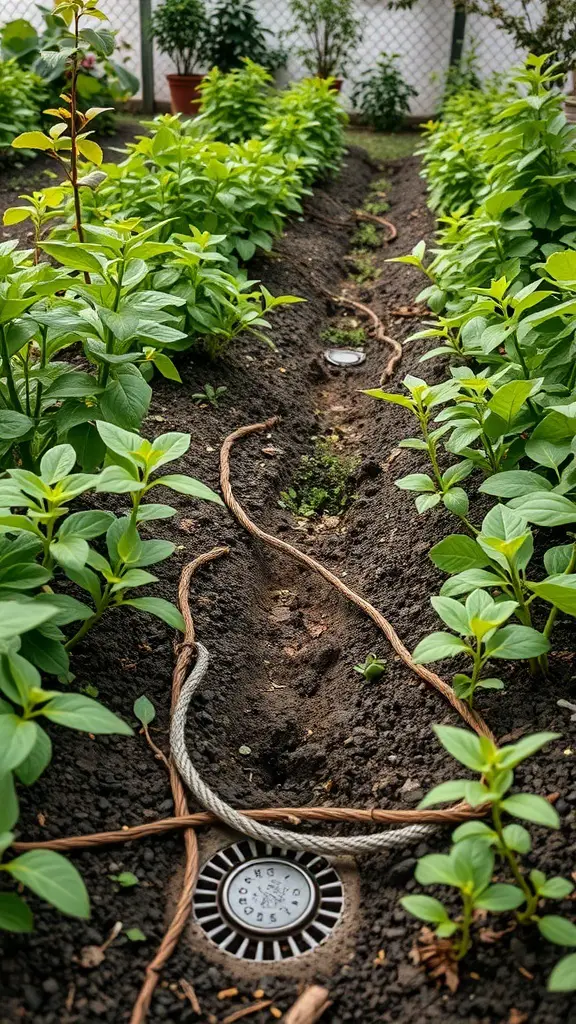
Managing water runoff effectively is key for any landscape. The image shows a well-planned garden with drainage systems in place. This setup helps direct excess water away from plants, preventing root rot and other issues.
One major benefit is improved plant health. With proper drainage, plants receive just the right amount of water. This balance promotes stronger growth and vibrant foliage.
Another advantage is soil preservation. Effective runoff management reduces erosion, keeping the soil rich and fertile. Healthy soil supports a thriving garden ecosystem.
Water runoff management can also help reduce flooding. By directing water flow, you can minimize pooling in unwanted areas. This is especially important during heavy rains.
Lastly, it contributes to sustainability. By managing water wisely, you can conserve resources and maintain a beautiful landscape without excessive water use.
Using Retention Basins Effectively
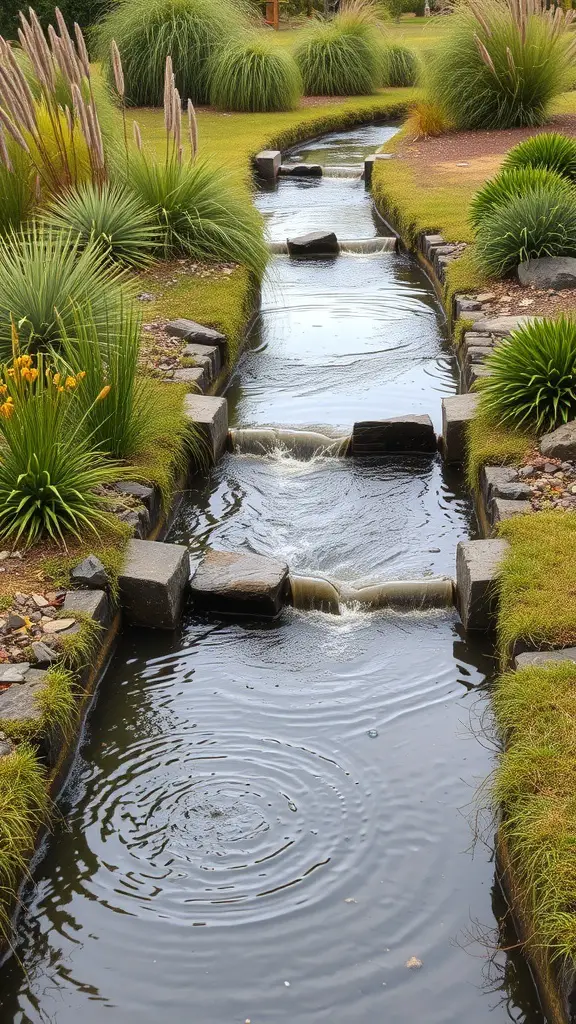
Retention basins are a smart way to manage water runoff in landscaping. They help collect and store rainwater, reducing flooding and erosion. The image shows a beautiful example of a retention basin, featuring a gentle stream that flows through a well-designed landscape.
The basin is lined with stones, creating a natural look while guiding water smoothly. Surrounding plants add greenery and help filter the water, making the area both functional and attractive. This setup not only captures runoff but also enhances the beauty of the yard.
Incorporating retention basins can be a great addition to any outdoor space. They can be designed to fit seamlessly into the landscape, providing both utility and aesthetics. Consider using native plants around the basin to support local wildlife and improve water quality.
Permeable Paving Solutions
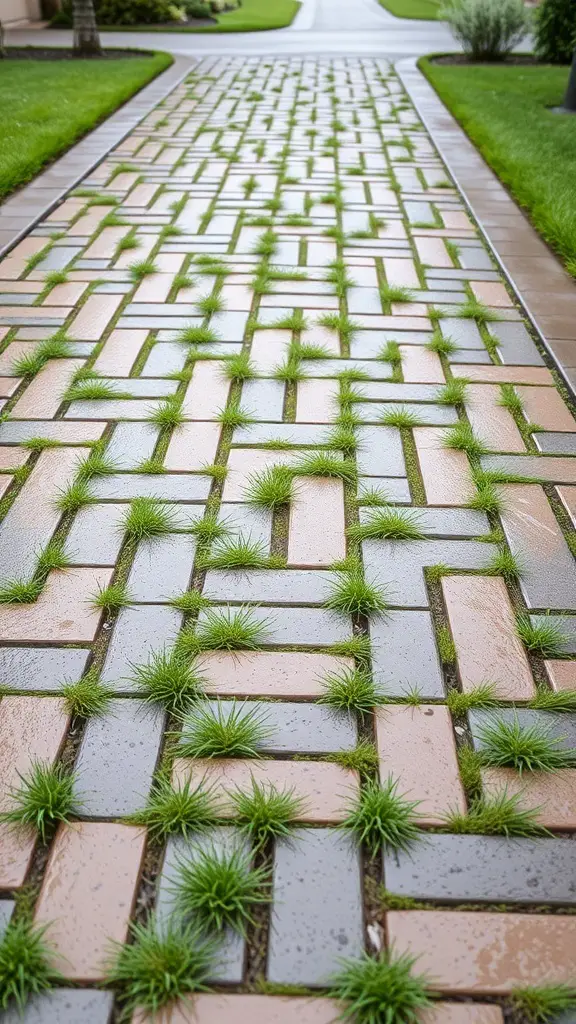
Permeable paving is a fantastic way to manage water runoff while adding style to your outdoor space. The image shows a beautifully designed pathway made of interlocking pavers, with grass peeking through the gaps. This design not only looks great but also allows rainwater to seep through, reducing puddles and erosion.
Using permeable materials helps keep the environment healthy. It lets water filter back into the ground, replenishing groundwater supplies. Plus, it minimizes the risk of flooding during heavy rains. Choosing permeable paving is a smart choice for both aesthetics and functionality.
Consider incorporating different shapes and colors of pavers to create unique patterns. This can enhance the visual appeal of your driveway or walkway. You can also mix in some decorative stones or gravel for added texture. The possibilities are endless!
Native Plants for Water Management
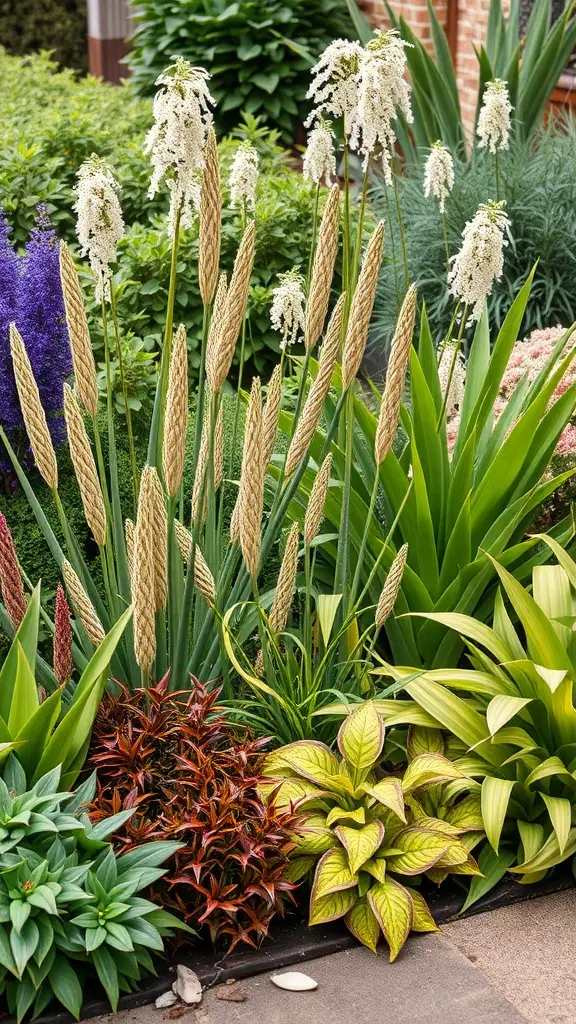
Native plants are a fantastic choice for managing water runoff in your landscape. They are adapted to local conditions, which means they require less water and maintenance. This makes them perfect for creating a sustainable garden.
The image showcases a vibrant mix of native plants. Notice the tall grass-like plants with white flowers, which can help absorb excess water. The colorful foliage of the other plants adds beauty while also playing a role in water management.
Using native plants can improve soil health and reduce erosion. They create a natural barrier that helps slow down water flow, allowing it to soak into the ground. This not only benefits your garden but also helps local wildlife thrive.
Consider incorporating a variety of textures and colors to make your landscape visually appealing. Grouping plants with similar water needs can also enhance their effectiveness in managing runoff. Overall, native plants are a smart and eco-friendly choice for any garden.
Understanding Water Runoff in Landscaping
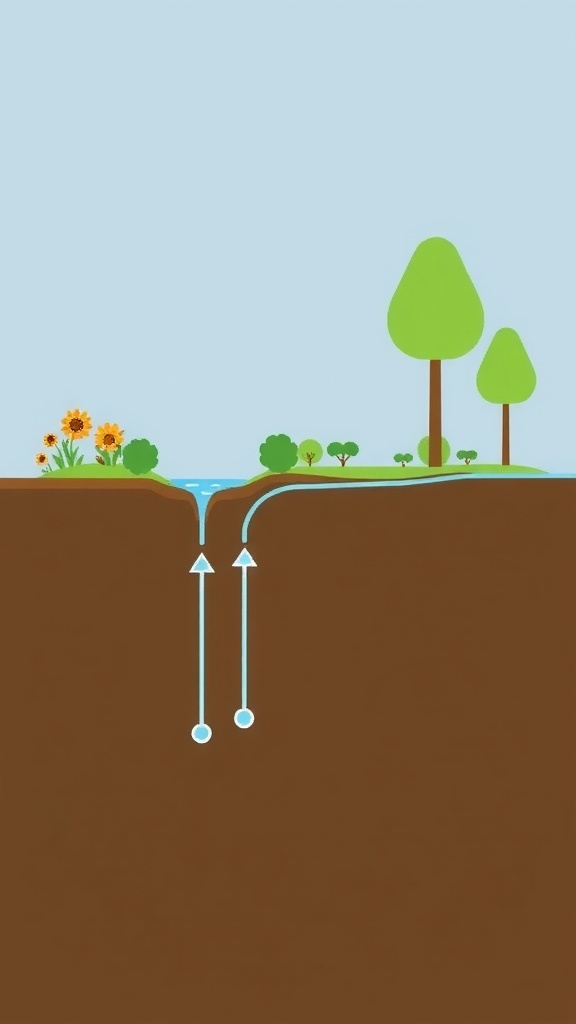
Water runoff is a key factor in landscaping. It refers to how water flows over surfaces, especially during rain. The image shows a creative design that channels water in a way that benefits the landscape.
This design uses a winding blue path to represent water flow. The grassy areas along the path help absorb some of the water, reducing runoff. This is important for preventing erosion and maintaining healthy soil.
Landscaping that considers water runoff can help manage excess water. It can also enhance the beauty of outdoor spaces. Plants and features are strategically placed to guide water where it’s needed most.
Incorporating elements like this can lead to a more sustainable garden. It helps in conserving water and promoting a healthy ecosystem. Understanding how water moves in your landscape can lead to better design choices.
The Role of Mulch in Water Conservation
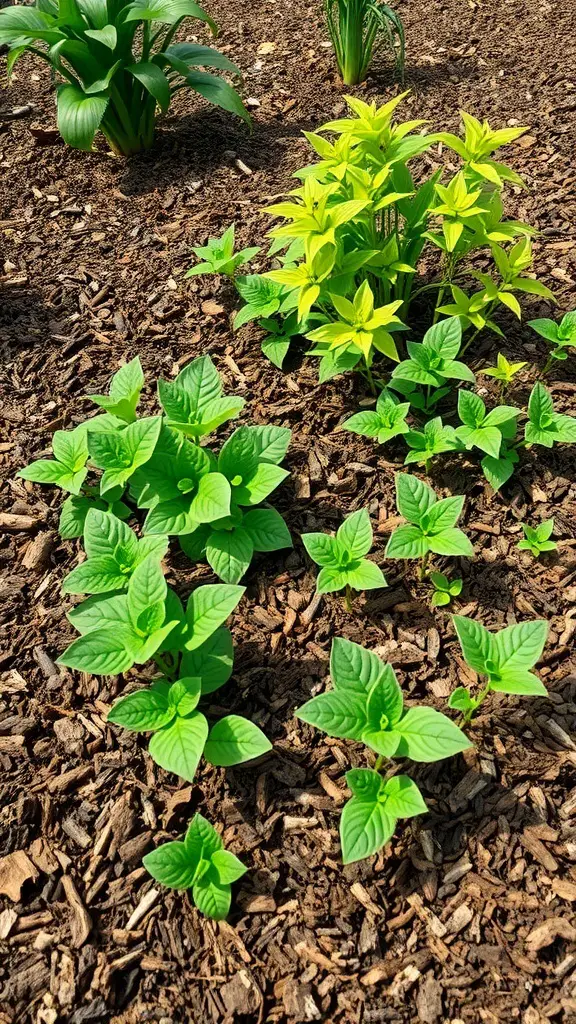
Mulch plays a key role in conserving water in landscaping. In the image, you can see vibrant green plants surrounded by a layer of mulch. This setup is not just visually appealing; it serves a practical purpose.
Mulch helps retain moisture in the soil, reducing the need for frequent watering. The dark color of the mulch absorbs heat, which can help warm the soil and promote plant growth. This is especially beneficial in areas with high temperatures.
Another advantage of mulch is its ability to suppress weeds. By blocking sunlight, it prevents weed seeds from germinating. This means your plants can thrive without competition for water and nutrients.
Using organic mulch, like wood chips or bark, also enriches the soil as it breaks down over time. This adds nutrients back into the ground, supporting healthy plant growth.
In summary, incorporating mulch into your landscaping not only enhances the look of your garden but also plays a crucial role in water conservation and plant health.
Creating Rain Gardens
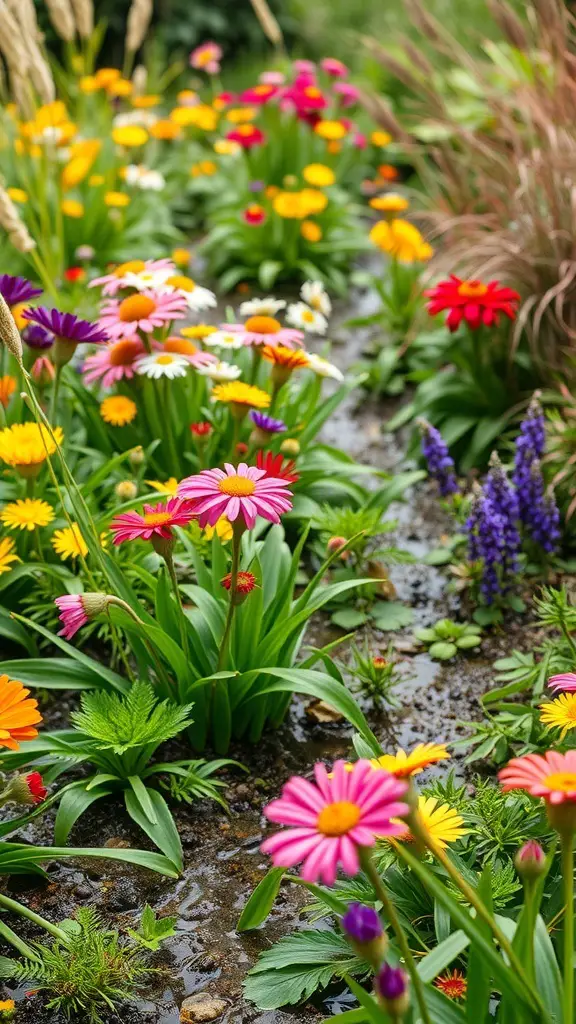
Rain gardens are a fantastic way to manage water runoff while adding beauty to your landscape. Picture a vibrant garden filled with colorful flowers, like daisies and gerbera, surrounded by lush greenery. This image captures the essence of a rain garden perfectly.
The flowers not only look great, but they also help absorb rainwater, reducing runoff. The gentle slope allows water to flow into the garden, where it can soak into the soil. This is a win-win for both your yard and the environment.
When planning your rain garden, think about the types of plants that thrive in wet conditions. Native plants are often the best choice, as they are adapted to local climates and require less maintenance. Consider mixing different heights and colors to create a visually appealing space.
Don’t forget about the layout! A winding path through the garden can enhance its charm while directing water flow. Adding stones or mulch can also help with drainage and prevent erosion.
Swales: Natural Drainage Features

Swales are a fantastic way to manage water runoff in landscaping. They act like natural ditches, guiding excess water away from areas where it can cause problems. The image shows a lovely swale with a gentle slope, allowing water to flow smoothly through the landscape.
The grassy banks and rocks create a natural look, blending well with the surroundings. This design not only helps with drainage but also adds beauty to the yard. Plants along the edges can help filter pollutants, making the water cleaner as it moves.
Swales can be a great addition to any garden. They can prevent erosion and keep soil healthy. Plus, they can be a fun spot for kids to explore or for wildlife to visit. If you’re thinking about landscaping, consider incorporating swales for both function and style!
Maintenance Practices for Sustainable Landscapes
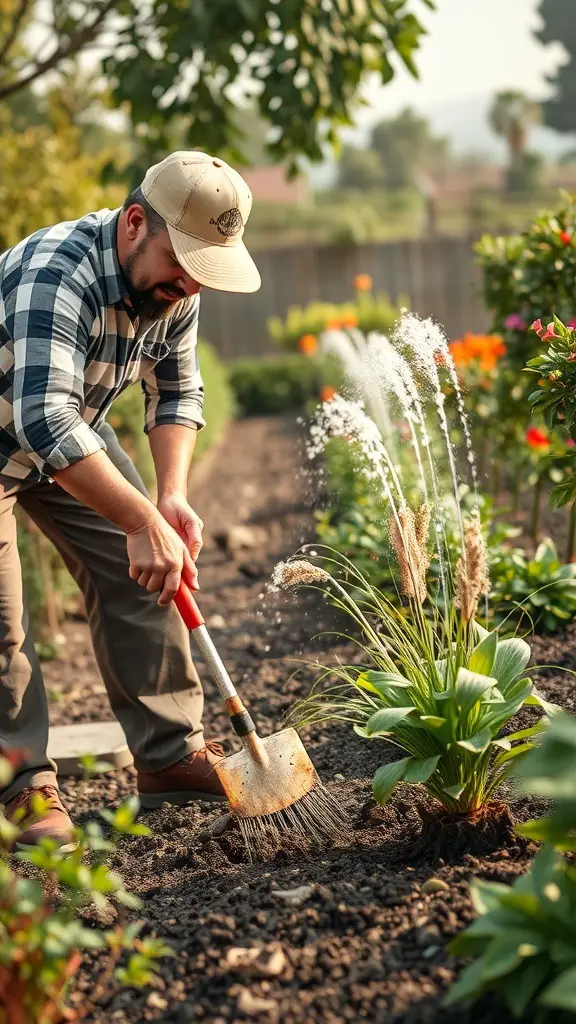
Maintaining a sustainable landscape is all about balance. The image shows a person tending to a garden, which highlights the hands-on approach needed for effective maintenance. Regular care ensures plants thrive and helps manage water runoff effectively.
Using tools like a rake or shovel can aid in soil aeration and weed control. This not only promotes healthy plant growth but also reduces the chances of water pooling, which can lead to erosion.
Incorporating native plants into your landscape can also minimize maintenance. These plants are adapted to local conditions and require less water and care. They help create a self-sustaining environment, making your landscape more resilient.
Mulching is another great practice. It helps retain moisture in the soil and reduces the need for frequent watering. Plus, it adds a nice aesthetic touch to your garden.
Lastly, consider implementing rain gardens or bioswales. These features can capture and filter runoff, improving water quality while enhancing the beauty of your landscape.
Creating Water Features that Enhance Drainage
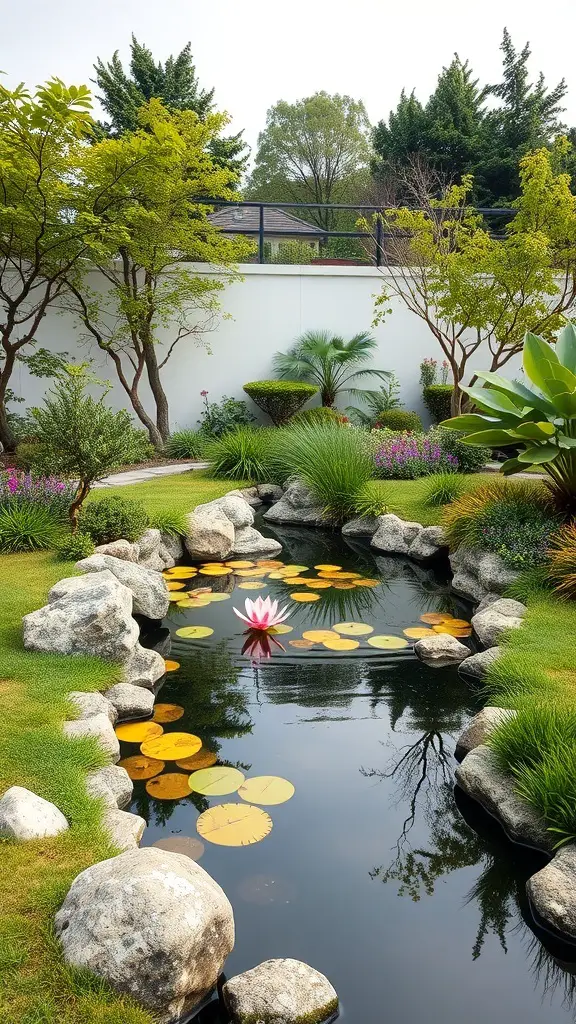
Water features can be a fantastic addition to your landscape, especially when they help manage drainage. A pond, like the one in the image, not only looks beautiful but can also play a role in directing runoff. The rocks and plants surrounding the water create a natural barrier, guiding excess water away from your home.
The vibrant lily pads and the single blooming flower add a pop of color and attract wildlife, making your garden lively. The plants around the pond help absorb excess moisture, reducing the risk of flooding in your yard. Consider incorporating similar features to create a balance between aesthetics and functionality.
Using native plants around your water feature can enhance drainage while providing a habitat for local wildlife. This approach creates a sustainable environment that benefits both your garden and the ecosystem. Think about how you can blend beauty with practicality in your outdoor space.
Incorporating Rain Barrels
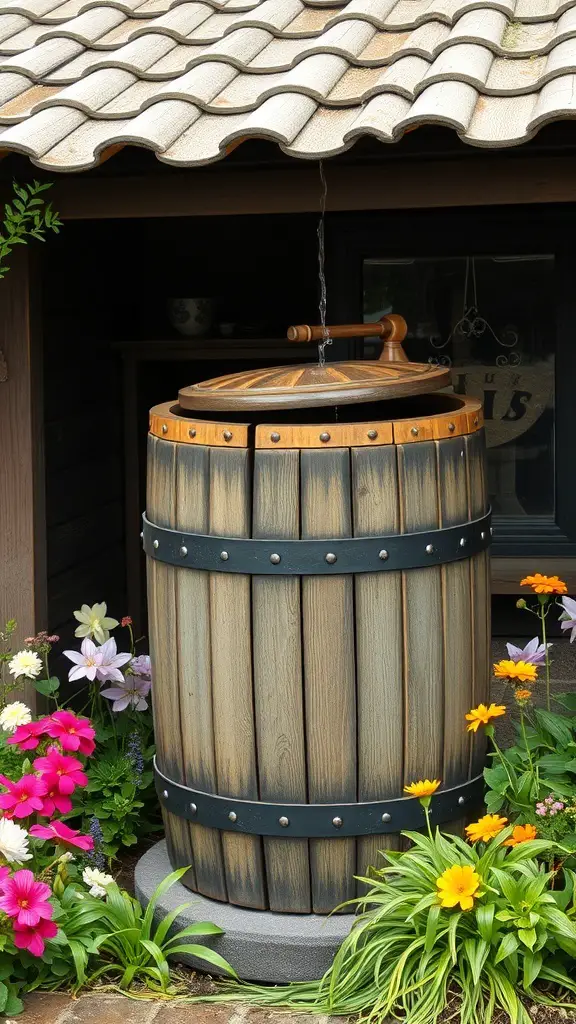
Rain barrels are a fantastic way to collect and store rainwater. They help reduce runoff and provide a sustainable water source for your garden. The image shows a beautifully crafted rain barrel, blending seamlessly with vibrant flowers around it.
Using a rain barrel can save you money on your water bill while also helping the environment. When it rains, the water flows from your roof into the barrel, ready for use when you need it. This is especially useful during dry spells.
Positioning your rain barrel near your garden makes it easy to water plants without using tap water. You can attach a hose or use a watering can to distribute the collected water. This simple addition can make a big difference in your landscaping efforts.
Consider adding decorative elements to your rain barrel setup. Surrounding it with colorful flowers, like in the image, not only enhances the look but also attracts beneficial insects. It’s a win-win for your garden!
Soil Amendments for Better Absorption
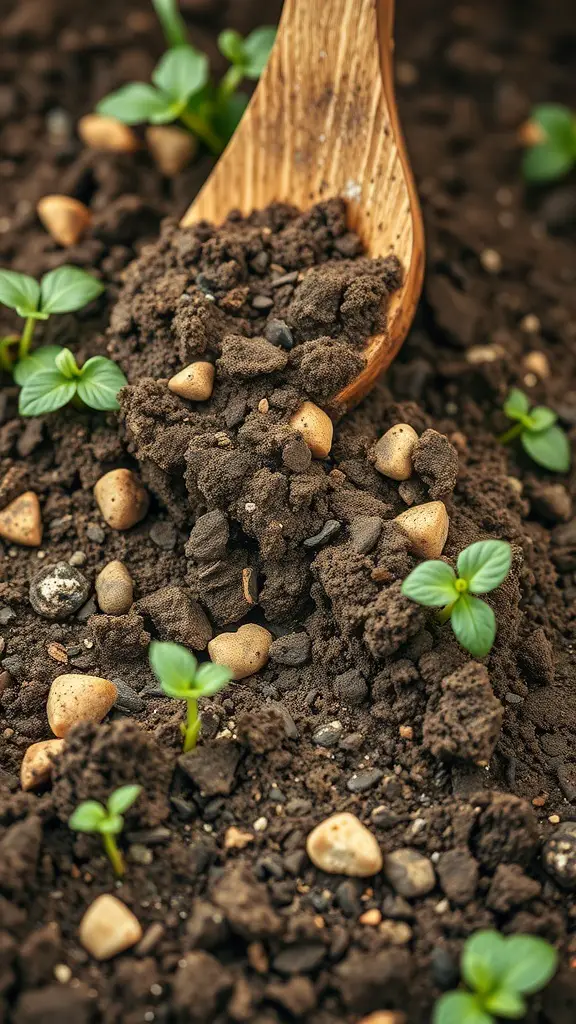
Soil amendments play a key role in improving water absorption in landscaping. The image shows rich, dark soil with small plants sprouting, indicating healthy growth. A wooden spoon rests on the soil, suggesting a hands-on approach to gardening.
Adding organic matter like compost can enhance soil structure. This helps retain moisture while allowing excess water to drain away. You might also consider using materials like peat moss or coconut coir, which improve aeration and moisture retention.
Another option is to mix in minerals such as gypsum or lime. These can help break up compacted soil, making it easier for roots to access water. Remember, a well-amended soil not only absorbs water better but also supports plant health.
Designing with Contours for Water Flow
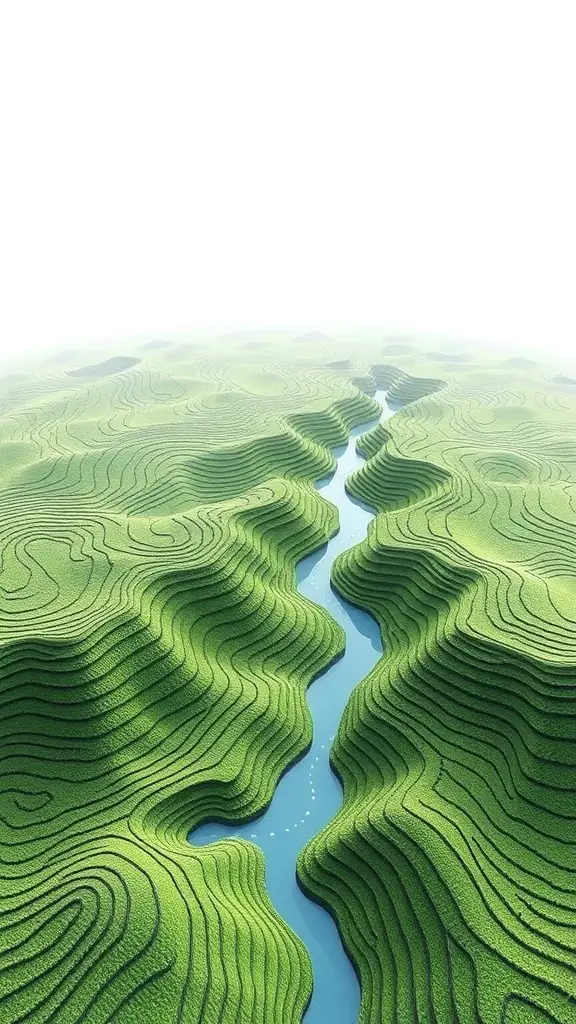
When it comes to landscaping, using contours can make a big difference in how water flows through your space. The image shows a beautiful landscape with rolling hills and a winding river. This design not only looks great but also helps manage water runoff effectively.
Creating contours means shaping the land to direct water where you want it to go. Instead of letting water pool in unwanted areas, you can guide it along paths that benefit your plants and garden. The gentle curves in the landscape shown in the image illustrate how effective this method can be.
Think about how you can incorporate similar designs in your own yard. You might want to create small hills or depressions that lead water to specific areas, like flower beds or vegetable patches. This way, you can keep your plants healthy and reduce erosion.
Using contours not only enhances the beauty of your landscape but also plays a vital role in water management. It’s a win-win for both aesthetics and functionality!
Implementing Green Roofs
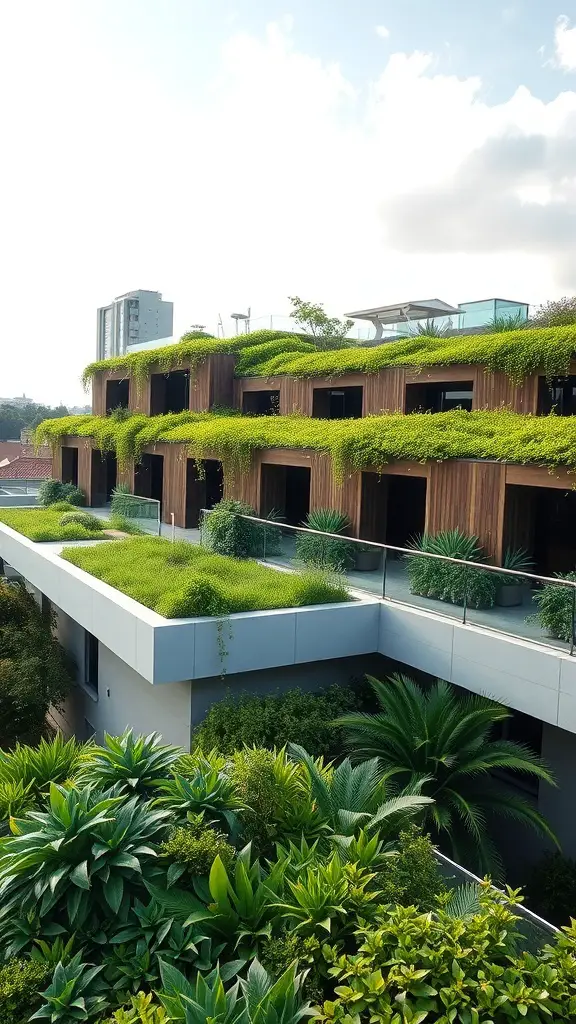
Green roofs are a fantastic way to manage water runoff while adding beauty to urban spaces. The image shows a stunning example of a green roof, where lush plants thrive on top of a building. This design not only looks great but also helps absorb rainwater, reducing the amount that flows into drainage systems.
These roofs can be designed with various types of vegetation, from grasses to small shrubs. They provide insulation, which can lower energy costs, and create habitats for birds and insects. Plus, they can improve air quality by filtering pollutants.
When planning a green roof, consider the local climate and the types of plants that will thrive there. It’s important to have a good drainage system in place to prevent water pooling. Regular maintenance is key to keeping the plants healthy and vibrant.
Overall, green roofs are a smart choice for sustainable landscaping. They not only help with water runoff but also enhance the aesthetic appeal of any building.
Using Ground Covers to Prevent Erosion
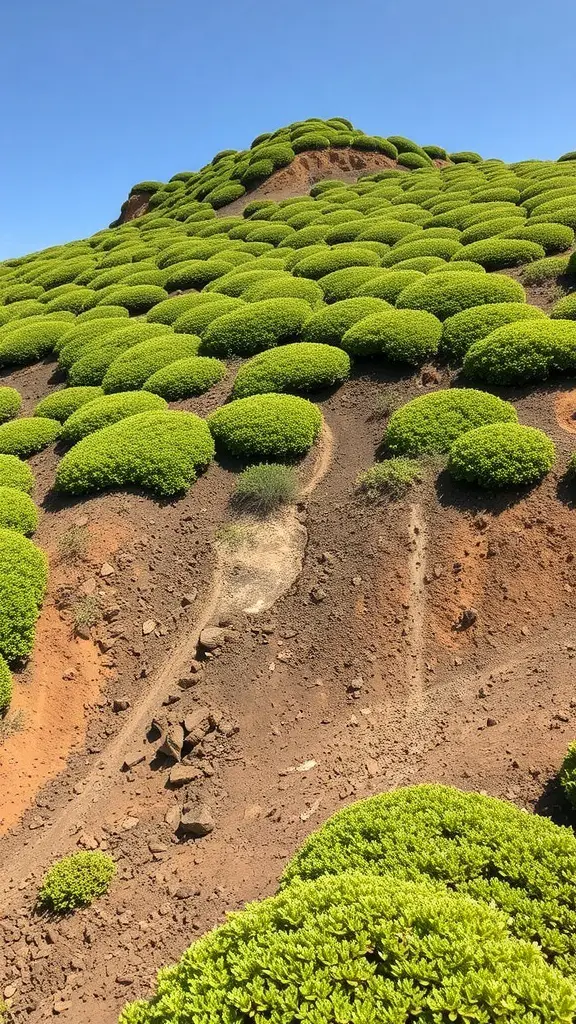
Ground covers are a fantastic way to tackle erosion, especially in areas with slopes. The image shows a hillside covered in lush green plants that create a natural barrier against soil loss. These plants not only look great but also help hold the soil in place.
When rainwater runs off, it can wash away topsoil, leading to erosion. Ground covers act like a sponge, absorbing water and reducing the speed of runoff. This is crucial for maintaining healthy soil and preventing damage to your landscape.
Choosing the right ground cover plants is key. Look for varieties that thrive in your climate and soil type. Some popular options include creeping thyme, clover, and sedum. They spread quickly and form a dense mat, which is perfect for stabilizing slopes.
Incorporating ground covers into your landscaping not only prevents erosion but also adds beauty to your yard. Imagine a vibrant, green hillside that stays intact, even after heavy rains. It’s a win-win for both aesthetics and functionality!



